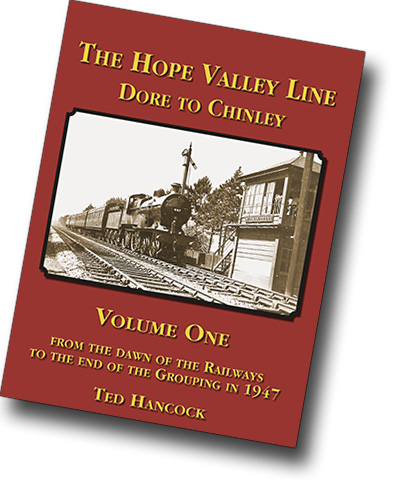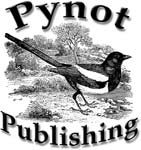Click here to download an order form for payments by cheque (UK customers only).
Secure online ordering by Paypal or credit / debit card is available by clicking on the relevant button below.
Home | Railway History | Local History | Staffordshire Bull Terriers | Literary Drinkers
Please request a quote for multiple purchases to benefit from reduced postage!
 The Hope Valley Line : Dore to Chinley - A History, Vol. 1
The Hope Valley Line : Dore to Chinley - A History, Vol. 1
From the Dawn of the Railways to the End of the Grouping in 1947
by Ted Hancock.
ISBN 978-0-9562706-9-6
Published 2019 - 300 pages, illustrated, maps.
A4 - Hardback
Having spent his formative years in the suburb of Crookes, Sheffield, which is less than three miles from the Midland station and two miles from the open country of the Rivelin valley and beyond it the Peak District Ted has always thought that he has enjoyed all the benefits of living in a big city and the pleasures of superb countryside. As he has researched this book Ted has looked at the Hope and Noe valleys afresh and come to realize there is hardly a footpath that he have not walked, from the peat bogs of Kinder Scout to the gentle river walks in all seasons and all weathers. Ted's favourite view of the Hope valley is from Longshaw where the B6054 from Owler Bar and the A625, which drops down Froggatt Edge meet. The view across to Mam Tor is always different, depending on the time of year, the light and the state of the weather.
In the 1920s and 1930s Ted's father, who died when he was in my twenties, was a keen walker and cyclist and was a member of the Clarion Ramblers Club. He took part in the celebrated Kinder trespass in 1932 - hopefully the police have now closed the file! It was to him that Ted owes his love of the area.
This first volume covers the canals and all the projected lines that were never built; how the connecting lines reached Dore & Totley and Chinley, the epic story of the building of the line and the contribution of the navvies and finally the period from the opening of the line to the end of the Grouping period in 1947.
Volume 2 will cover the infrastructure of the line as far as Gowhole and include the widening of the lines from Sheffield to Dore and Chinley North Junction to New Mills South Junction. Also included are the railways built for the Derwent, Howden and later Ladybower reservoirs and the branch to the Hope Valley cement works of G. &. T. Earle which opened in 1929.
Volume 3 will cover the British Railways period from 1948 to Privatisation between 1994 and 1997; these years were marked by a fall in passenger numbers and the decline of coal usage and the elimination of steam motive power together. The Beeching Report of 1963 seriously jeopardised the future of the line which was ultimately, and happily, reprieved. It became the only line between Derby and all places north of Sheffield to Manchester.
Sit back and enjoy the ride!
CONTENTS
CHAPTER 1 – GETTING FROM SHEFFIELD TO MANCHESTER
The Tortuous History
The Pre-Railway Age
Railways across the Peak District
Lines within the Peak District
Lines that Directly Rivalled the Dore and Chinley Railway
CHAPTER 2 – HOW THE RAILWAY REACHED DORE AND CHINLEY
How the Railway reached Dore and Totley
How the Railway reached Chinley
CHAPTER 3 – THE DORE AND CHINLEY RAILWAY
The Progenitors
The Dore & Chinley Railway Company
The Midland Railway Takes Over
Preparations for Starting the Building
Chronology of the Building
Additional Information
Locomotives Built for the Opening
The Opening of the Line
Contemporary Reports
CHAPTER 4 – FROM OPENING TO NATIONALISATION 1894 to 1947
Chronology of Events 1894 to 1947
Guides to the New Railway
From Opening to the First World War
The First World War
Post-War to Grouping
The Grouping Period
The Second World War
Post War to Nationalisation
Nationalisation
CHAPTER 5 – OPERATIONS
Introduction to the Timetables
Passenger Operations
Freight Operations
Locomotive and Traffic Summaries
Motive Power
APPENDICES
1. Men, Horses and Engines Employed on Building the Line
2. Navvy Accidents and Deaths

